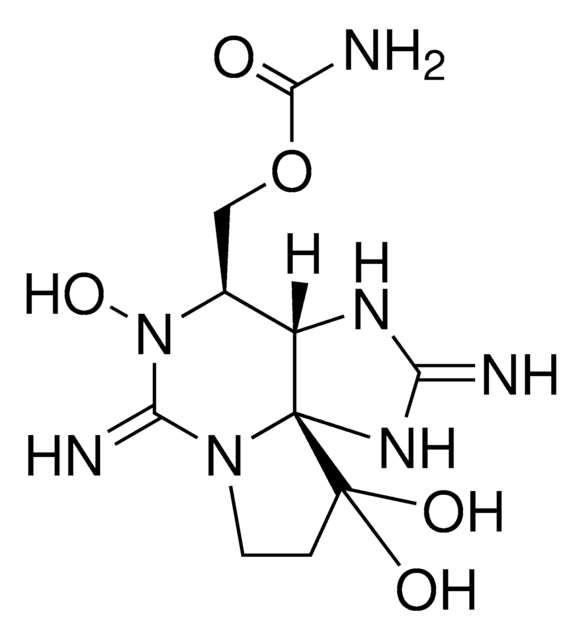MABN616
Anti-Potassium Channel Kv1.1 Antibody, clone K36/15
clone K36/15, from mouse
Synonim(y):
Potassium voltage-gated channel subfamily A member 1, RBKI, RCK1, Voltage-gated potassium channel subunit Kv1.1
About This Item
Polecane produkty
pochodzenie biologiczne
mouse
Poziom jakości
forma przeciwciała
purified antibody
rodzaj przeciwciała
primary antibodies
klon
K36/15, monoclonal
reaktywność gatunkowa
mouse, rat
metody
immunofluorescence: suitable
immunohistochemistry: suitable
western blot: suitable
izotyp
IgG2bκ
numer dostępu NCBI
numer dostępu UniProt
Warunki transportu
wet ice
docelowa modyfikacja potranslacyjna
unmodified
informacje o genach
rat ... Kcna1(24520)
Opis ogólny
Specyficzność
Immunogen
Zastosowanie
Neuroscience
Ion Channels & Transporters
Immunofluoresense Analysis: A representative lot from an independent laboratory detected Potassium Channel Kv1.1 in Kv1.1 transfected COS-1 cells (Tiffany, A. M., et al. (2000). J Cell Biol. 148(1):147-158.).
Immunhistochemistry Analysis: A representative lot from an independent laboratory detected Potassium Channel Kv1.1 in Kv1.1 transfected COS-1 cells (Wenzel. H. J., et al (2007). Epilepsia. 48(11):2023-2046.).
Immunohistochemistry Analysis: A representative lot from an independent laboratory detect Potassium Channel Kv1.1 in wild type mouse hippocampus tissue, and demonstrated a loss of signal in Potassium Channel Kv1.2 knock out mouse hippocampus tissue (Prof. J. Trimmer, University of California, Davis.).
Jakość
Western Blotting Analysis: 2 µg/mL of this antibody detected Potassium Channel Kv1.1 in 10 µg of mouse brain tissue lysate.
Opis wartości docelowych
Postać fizyczna
Przechowywanie i stabilność
Komentarz do analizy
Mouse brain tissue lysate
Inne uwagi
Oświadczenie o zrzeczeniu się odpowiedzialności
Nie możesz znaleźć właściwego produktu?
Wypróbuj nasz Narzędzie selektora produktów.
Kod klasy składowania
12 - Non Combustible Liquids
Klasa zagrożenia wodnego (WGK)
WGK 1
Temperatura zapłonu (°F)
Not applicable
Temperatura zapłonu (°C)
Not applicable
Certyfikaty analizy (CoA)
Poszukaj Certyfikaty analizy (CoA), wpisując numer partii/serii produktów. Numery serii i partii można znaleźć na etykiecie produktu po słowach „seria” lub „partia”.
Masz już ten produkt?
Dokumenty związane z niedawno zakupionymi produktami zostały zamieszczone w Bibliotece dokumentów.
Nasz zespół naukowców ma doświadczenie we wszystkich obszarach badań, w tym w naukach przyrodniczych, materiałoznawstwie, syntezie chemicznej, chromatografii, analityce i wielu innych dziedzinach.
Skontaktuj się z zespołem ds. pomocy technicznej








